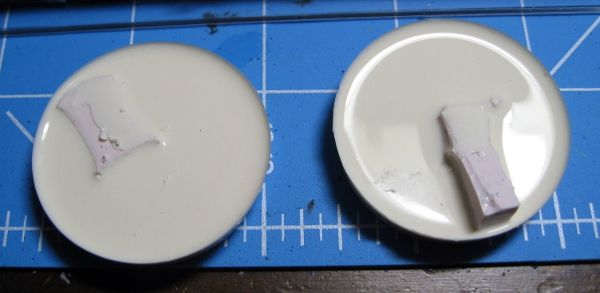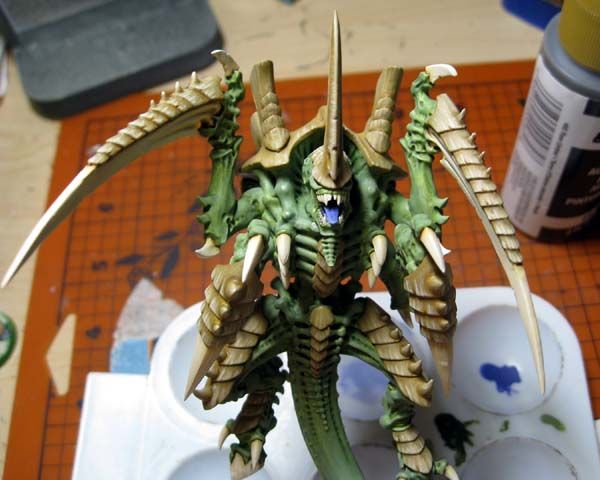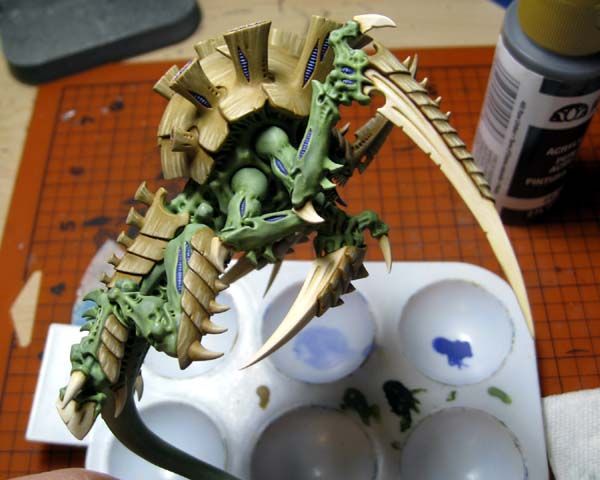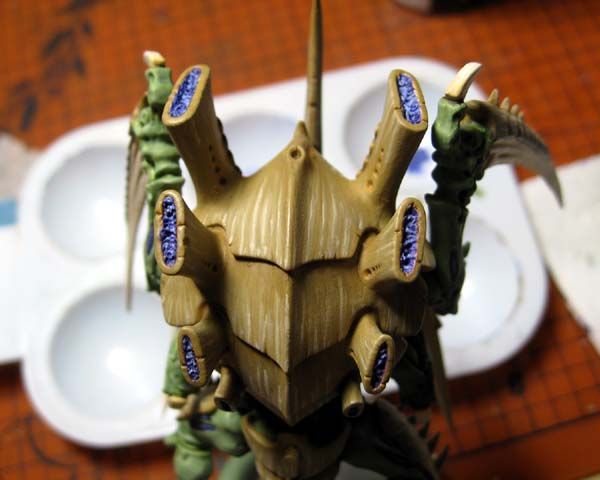The first thing I've done is assemble and begin basing for some of my Blood Bowl Orc models. I selected three random models from the box: a thrower and a couple linemen or blockers. I glued them into their slotted bases, and started playing with basing. Here's the first shot of them:
You can just see the small amount of texture I applied to the bases. It's the clearish, goopy stuff. Here's a close up:
It's a product called "resin sand" that is made by various art supply companies. I used Liquitex brand, as that's what I had. From what I understand, painters and artists add this stuff to their paints to infuse texture into paintings and projects. I used it a long time ago when making rusty terrain for a Mars board at the FLGS. It dries quite hard and is pretty durable.
After the resin sand was applied, I glued down some basic craft sand on the bases. The result is unimpressive so far, as can be seen below, but I think once it's painted and I've glued on some static grass, it'll look better.
Since I had the basing materials out, I decided to jump in and start working on bases for my Harlequins as well. These guys are a little weird with the integrated wraithbone chunks, and I wasn't sure exactly which direction I wanted to go in. I decided to use straight glue on the bases, sprinkle some medium and large pebbles on, and then coat the remainder in fine sand. These are the same materials I'm using for my Raven Guard, but applied over the whole base instead of just small spots as on the Marines.
These models will be primed white, and the bases will end up a light tan for a desert feel. Once they're painted, I'll be adding some dead grass and scrubby vegetation to them.
On the Marine front, I finished my Deathstorm Drop Pod, but am working on taking pictures. My photo area is only so large, and I'm tinkering with ways to take pics of such a tall model.
I wasn't sure what the next Marine unit I wanted to paint was, so I took a few spare hours the other day and did a full inventory of all my kits and bits. I came to a surprising realization. Between my bits bins and a huge Rubbermaid tote of sprues and kits, I can only build the following:
- 10 Terminators
- 8 Scout Bikes (half of which are old, metal models)
- 1 Rhino (with an optional Whirlwind turret or a range of Razorback turrets)
- 1 Land Raider (with weapons for all three variants)
- 6 Servitors
- 1 Third Edition Techmarine
- and SIX power armored models of any type.
I was really shocked by the fact I can only build a half-dozen PA models. I have a significant number of PA sprues and bits, but the thing holding me back are torso backs. I have completely run out, outside of the six I have, and even those are preassembled to fronts from an auction lot I got years ago. I had plans for a lot of PA models for a Demi Company in the near future, but now I need to go bits shopping!
In fact, I can build a bunch more models with a minimum of bits purchasing. Five Terminator torso fronts can net me five more full Terminators, while a single Rhino rear door would get me another full Rhino chassis. Three basic bike chassis (without riders) would add another three Scout Bikes to my options. But the big one is torsos. I can build another 19 models just by buying torso backs (though no one sells just backs). Oh, and I can build three full Landspeeders if I get some more of the magnetized flying stands I use from Back to Base-ix.
I've got a few things listed on eBay right now in order to raise some funds for said bits, but in the meantime I'm starting assembly of a Rhino. I think my lone Sternguard Squad or my small tactical Squad would benefit from a transport or two.
I've got a lot of irons in the fire now with Blood Bowl, Harlies, and Raven Guard. We've got a Blood Bowl league starting up soon that I'm going to really have to work to participate in, and the FLGS monthly 40K tourney coming up in a couple weeks. Lots to do!




















































